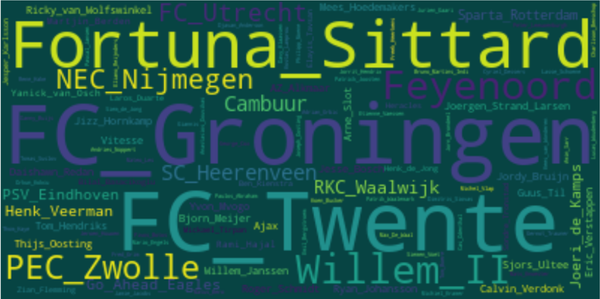Natural Language Processing: the ability to bring computers and human language together.

Natural Language Processing: the ability to bring computers and human language together.
As algorithms have come to play an increasingly important role in society, the question of whether computers are capable of human action is also being asked more frequently. Natural Language Processing (NLP) is the field that ensures that the answer to this question comes ever closer to a 'Yes'. In this article we will look at the possibilities and techniques of NLP by means of a demo.
Sentiment Analysis within the Eredivisie
Because we at Datacation like to put theory into practice, we created a demo that demonstrates the possibilities of NLP. Besides a passion for data, many of our Datacationers also have a passion for football. By combining these two passions, we came up with the following demo: a soccer sentiment analysis tool.
This tool analyzes the sentiments of all matches in the Eredivisie, by analyzing tweets posted during these matches. This makes it possible to see, for each match played, whether the twittering soccer fan was predominantly positive or negative. In addition, this tool provides insight into the players and teams that have stood out the most, both positively and negatively.
Are you curious about the sentiment of your favorite soccer club? Discover the tool via the following link and find out if you are in line with twittering Netherlands.
The technique behind the tool
Sentiment analysis is a form of Natural Language Processing (NLP) that analyzes text data to determine the sentiment of the text. To determine the sentiment of tweets, the 'BERT multilingual base model' was used. At the base of this model is the BERT framework, which stands for Bidirectional Encoder Representations from Transformers. BERT is an NLP technique designed to help computers understand context. The BERT model has been trained on, among other things, the entire Wikipedia Encyclopedia of over 100 countries. In total, this amounts to over 3.3 billion words.
BERT uses the Transformer architecture. The Transformer in NLP is a new architecture that aims to solve series-to-series tasks while cleverly considering relationships between parts of a series, such as a word in a sentence that is at (a long) distance.
The specific model used for this tool was refined by training on reviews so that it could differentiate between positive and negative messages. In addition, the model is suitable for sentiment analysis in six languages: English, Dutch, German, French, Spanish and Italian. It is therefore a small step to also analyze sentiment within other European leagues besides the Eredivisie.
Possible applications
Besides soccer matches, there are of course many applications where NLP can be used. One department that uses NLP a lot is customer service. Nowadays a large part of the contact in customer service has moved from the human to the computer. A prerequisite for this is that the computer must be able to communicate in a human way and, for example, be able to assess whether a customer is positive or negative.
Another example where NLP comes into its own is in the automation of e-mail services. If a computer can take in valuable information and process it automatically, a lot of manual work can be avoided.
Did our demo make you curious about the possibilities of NLP? Send an email to r.zoetekouw@datacation.nl so we can discover together how NLP can help your organization.